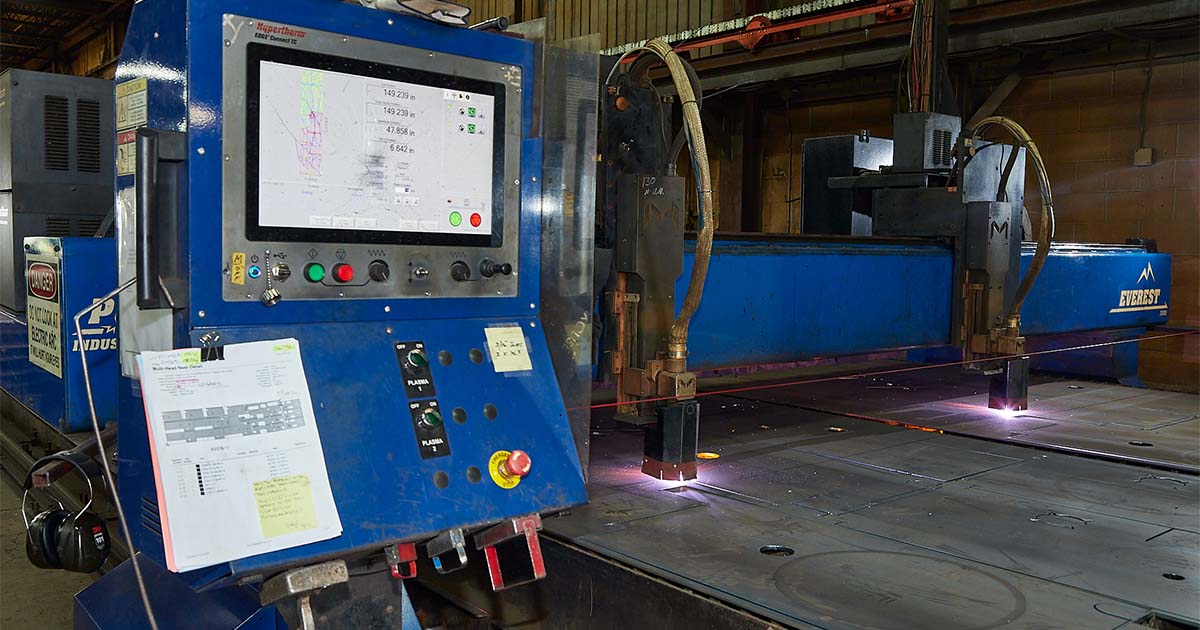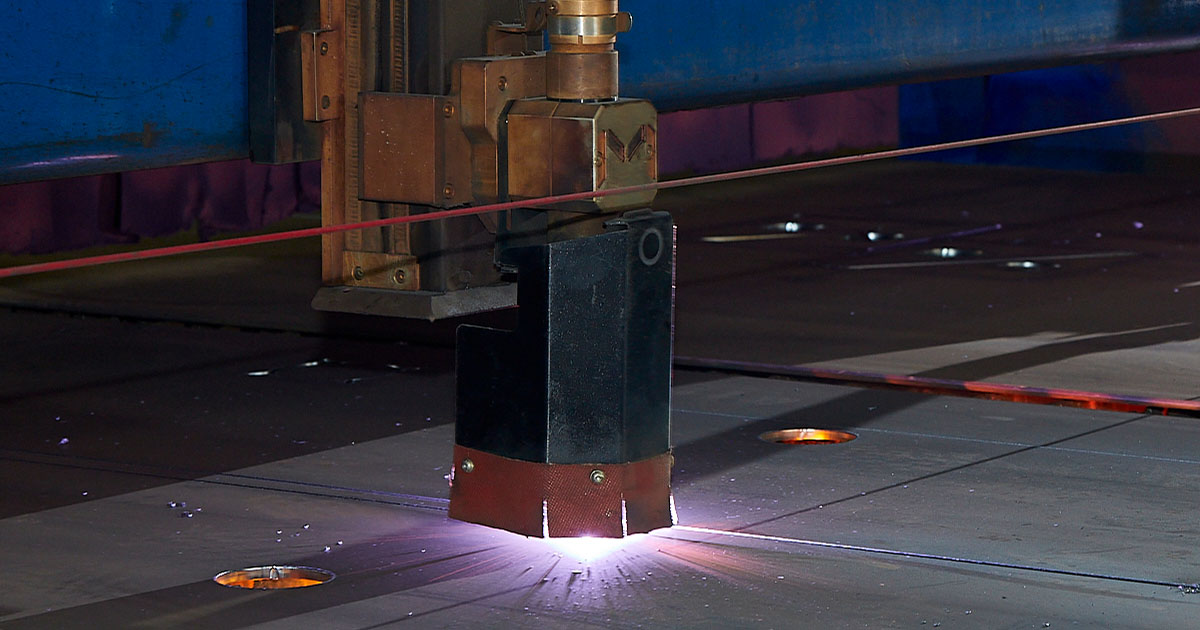
We collect basic website visitor information on this website and store it in cookies. We also utilize Google Analytics to track page view information to assist us in improving our website.
If you’re passionate about metal cutting or just keen to learn more, you’ve landed in the right place.
For over 38 years, Amber Steel has been at the forefront of metal cutting services, specializing in laser cutting, flame cutting, and plasma cutting. Our expertise has carved a niche in this cutting-edge industry, delivering precision and excellence across industrial projects big and small.
In our blog, we’ll share a mix of useful tips, innovative applications, our thoughts on sustainability in steel cutting, and more. Expect stories from the cutting floor, insights into how our processes can streamline projects across industries, and a few lessons we’ve learned along the way.
While we keep some of our trade secrets under wraps, this blog is designed to offer valuable nuggets of wisdom that you simply won't find anywhere else. Whether you’re a professional in the industry or someone fascinated by the possibilities of metal cutting, you'll find something of value here.
So, stick with us as we delve into the finer points of metal work. We’re glad to share our insights and lead discussions that matter to our industry.
How precision metal cutting propels the aerospace industry, from constructing lighter frames to enhancing aerodynamics.
The role of advanced metal cutting in automotive manufacturing, driving innovations in vehicle design and efficiency.
All about the robust and versatile process of flame cutting, ideal for tackling thicker metals with precision and ease.
Discover the art of crafting metal furniture, where cutting techniques meet design to create both functional and aesthetic pieces.
A behind-the-scenes look at the mechanics of metal cutting technologies and the science that makes them tick.
Laser cutting is where extreme precision meets efficiency, allowing for intricate designs and clean finishes.
The critical role of precise steel cutting in developing reliable and intricate medical devices.
How steel cutting supports the oil and gas industry with components that withstand extreme environments and pressures.
Known for its speed and versatility, plasma cutting slices through conductive metals with hot plasma.
Safety first! Tips and insights on maintaining a safe environment while handling powerful metal cutting equipment.
The backbone of construction, where steel fabrication and cutting technologies create frameworks that shape skylines.
Sustainability
A look at sustainability in metal cutting, focusing on practices that reduce waste and conserve energy to protect our planet.

Plasma cutting is a process that cuts through electrically conductive materials using an accelerated jet of hot plasma. If that sounds like some futuristic technology, you wouldn't necessarily be wrong, even though it's been around for a long time! The evolution of plasma cutting from its history to where it's going is an interesting tale, one the folks at Amber Steel want to explore with you today.
Let’s explore plasma welding history together, starting with some general information:
Plasma cutting is typically used in fabrication settings, automotive repair/restoration, industrial construction, as well as salve and scrapping operations – so to say that it's versatile is an understatement.
Due to the high speed, precise cuts, and the fact that it's generally low-cost, plasma cutting has seen some broad usage over the years, from large-scale industrial computer numerical control (or CNC) applications down to being used for smaller, hobbyist projects.
To understand plasma welding history, you need to understand how the process works. The basic plasma cutting process typically involves creating an electrified channel of extremely hot, electrically ionized gas (i.e. plasma) from the machine itself, through the piece to the cut, creating a completed electric circuit back to the plasma cutting machine through a grounding clamp.
This process is completed by using a compressed gas (oxygen, air, others, etc.), which is blown through a focused nozzle at very high speeds towards the workpiece. Then, an electrical arc is formed within said gas between an electrode near the gas nozzle and the actual workpiece. This creates an electrically charged channel of plasma.
If it sounds like science fiction, we don't blame you.
Electricity from the cutting torch travels down the plasma and delivers high enough heat to melt through the workpiece, while a high-velocity plasma and compressed gas blow the molten metal aside. This is, quite literally, how the machine cuts through the workpiece.
Science. Science and heat.
Plasma cutting is suitable for cutting both thin and thick materials. Hand-held torches can typically cut up to 38 mm (or 1.5 inches) thick steel plates, and stronger, computer-operated torches can cut through steel up to 150 mm (or 6 inches) thick.
Seeing as plasma cutters produce a very hot and localized "cone", if you will, to cut with, they are very useful for cutting through sheet metal into curved or angular shapes.
The arcs of the plasma cutter are generated via a three-step process. Firstly, a high-voltage spark ionizes the air inside the torch head, making the air conductive enough to allow a pilot arc to form. The pilot arc then forms within the torch head along with a current flowing from the electrode to the nozzle inside. The pilot arc burns up the nozzle during this phase.
Secondly, the air blows the plasma out of the nozzle towards the workpiece, providing a curved path from the electrode.
Finally, when the control system senses the current flowing from the electrode to the workpiece, it cuts through the electrical connection to the machine's nozzle. The current flows from this electrode to the workpiece, cutting through the piece without burning up the nozzle.
Plasma cutting was born from plasma welding back in 1957 and was introduced as a very conducive way to cut sheet metal and plates in the 1980s.
Plasma cutting traces its roots to the Second World War, when plasma arc technology was heavily utilized for welding aircraft, vehicles, and armaments. The urgency of wartime manufacturing spurred significant advancements in plasma arc welding techniques during this period.
Plasma cutting had a considerable advantage over traditional metal-on-metal cutting because it didn't produce metal chips. This method provided more accurate cuts and cleaner edges than other methods, such as oxyfuel cutting.
Early versions of the plasma cutting machine were large, slow, and relatively expensive. They were primarily used for repetitive cutting patterns in mass production.
Along with other machining tools, such as CNC, technology was applied to plasma cutting machines in the latter part of the 1980s and 90s. This increased flexibility in plasma cutting machines, enabling them to cut more varied shapes based on instructions programmed into the machine's numerical control board.
These CNC plasma cutting machines did have limitations, however, only capable of cutting patterns and parts in flat sheets of steel using two axes of motion known as X-Y cutting.
There are several methods to start the arc of a plasma cutting machine. For some models, the arc is generated by putting the torch in contact with the workpiece. Other machines, however, utilize a high-voltage, high-frequency circuit to create the arc.
Plasma cutters that work with or are close to sensitive electronics like CNC hardware or computers start the arc in other ways. The nozzle and electrode are typically in contact with one other, with the nozzle acting as the cathode (a negatively charged electrode by which electrons enter an electrical device) and the electrode as an anode (An electrode in a polarized electrical device that allows conventional current to enter). Once the plasma gas begins flowing, the nozzle is blown forward.
Operating plasma-cutting machines requires extensive safety precautions. Even though the machine itself is generally safe to use, those not utilizing the proper plasma cutting safety measures and gear can be at risk of injury. Proper training and equipment are still required.
Proper eye protection and face shields are required to prevent serious eye damage (referred to as arc eye) as well as protect them against damage from flying debris. It's recommended that operators use green lenses to protect their eyes.
OSHA recommends using a shade 8 filter for arc currents under 300 A, noting that lighter filters may be suitable when the arc is obscured by the workpiece based on experience.
It's also recommended that operators wear leather gloves, an apron, as well as a jacket to prevent burns caused by sparks and hot metal.
To avoid potentially catastrophic accidents, it's imperative to work in a clean area free of flammable fluids, materials, and gases. Sparks and hot metal from the plasma cutter can easily cause fires if they're not isolated from potentially flammable materials.
Plasma cutters can shoot hot sparks up to several feet away, and most operators won't realize a fire has started because their face shields essentially blind them to possible accidents.
Once upon a time, plasma torches were actually quite expensive. Due to this, they were generally found in professional welding shops and private garage practices.
However, modern plasma torches are increasingly affordable, now accessible to many hobbyists for less than $300. While older units may be heavy (yet still portable), newer models with inverter technology are lightweight but can match or even exceed the capabilities of their predecessors.
We've taken you through the history, the functionality, efficiencies, and inefficiencies – now let's quick-fire some facts.

Plasma arc welding is hot – very hot. Like, inconceivably HOT. Depending on the torch being used, including the machine's operational settings, they can reach up to 50,000 degrees Fahrenheit. For some perspective, shielded metal arc welding (SMAW) typically reaches temperatures up to 10,000 degrees Fahrenheit. Needless to say, plasma arc welding is 5x hotter than other conventional welding methods.
The plasma used in plasma arc welding is hot, as we explained. But it's also just as inconceivably FAST. When the plasma exits the torch's nozzle, did you know it reaches a speed comparable to the speed of sound? That's Mach 1 speeds!
Many people tend to assume that plasma arc welding is a liquid, but this isn't really true. In fact, it's more factual to say that it's actually a gas. When the electric current is activated, the plasma gas is ionized, increasing its conductivity. This electrical current can then freely flow through newly ionized gas plasma. Neat, right? Science is fun.
Whether it's cutting-edge projects or niche jobs, the team at Amber Steel are industry experts in the realm of steel cutting through laser, plasma, and flame-cutting technology from as far back as 1986. Servicing the Waterloo Region, our specialized team offers production-ready parts to our customers across several industries from mining, automotive, construction, and technology.
Dedicated to both excellence and sustainability, you can trust that by working with Amber Steel, you’re receiving the top-rated parts required for even the most specialized products. You won’t have to second guess our services – we guarantee that whatever the job, our team can help you find innovative solutions to get the job done. See our contact page for more details.